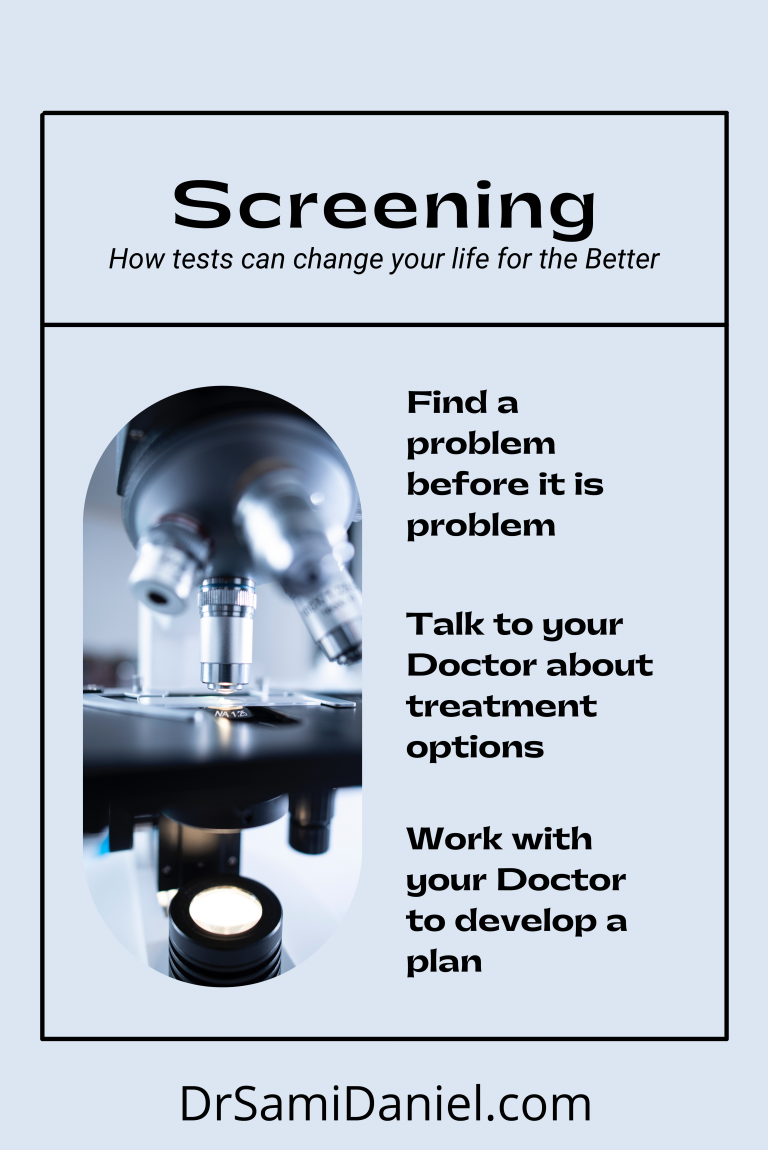Mammogram: Doctor Recommended and What You Need to Know
You come into your Doctor’s office for an appointment. Your Doctor reviews your records and notices that you have not had a mammogram in over a year; or maybe you have not had a mammogram at all! So he/she recommends it to you.
You may have heard of the test before from relatives or friends. You may have even gone through the procedure yourself. But maybe you are unclear as to why Doctors recommend mammograms.
You talk a little bit about the mammogram. Why it is important. How the procedure is done. What information you can gain from the images. And what can be done if something is found.
In your conversation, you might remember somebody who has found something on their routine mammogram and had to follow it closely. A worrisome time to say the least.
A diagnosis such as this not only affects the patient, but impacts that patient’s loved ones to the core. And finding a problem early can prevent a “scare” from turning into a true nightmare.
The United States Preventive Services Task Force recommends to start screening at the age of 40. So if you are the age of 40 years or older, speak with your Doctor about getting regular mammograms. (1)
What is a Mammogram?
A mammogram essentially takes a picture of the inside of a breast using Xrays. The goal is to find possible tumors at an early stage and intervene if necessary.
However this is not simply an Xray of the chest. A chest Xray would provide information on the heart, lungs, and ribs.
The Xray used in a mammogram must be specifically directed through each breast in order to gain the information needed for diagnosis. So the technician that conducts the mammogram will help position the Xray to get the best image for an accurate assessment. You can read more about how mammograms are done at the website for the Centers for Disease Control and Prevention. (2)
Why does a mammogram start at 40 years old?
Because the mammogram works using Xrays. And the nature of Xrays is to pass through soft tissue like a breast unless it gets blocked by something dense or hard like a tumor. That’s why bones light up really nicely on Xray; because bones are dense and prevent the Xray from passing through.
Breasts do not have bones inside them. However they can be dense in women less than 35 – 40 years of age. Therefore the Xray will not pass through the breast very well and provide a “false positive” test result.
A “false positive” is a test result that is positive when it should not be positive. This provides an inaccurate result because the whole image may be a shade of white and therefore will not be able to tell if anything is out of place.
It would be like trying to find a pocket of snow on a sandy white beach. Basically impossible to tell the difference between a white grain of sand and a snow flake unless you really look hard!
At the age of 40, the natural density of breasts have decreased enough to provide an accurate test result using mammograms. And if there is a pocket of material that is more dense than the rest of the surrounding tissue, we know to investigate even further with a diagnostic test. Learn more about screening tests here.
It’s much easier to see a pocket of snow in a field of green grass!
What is Breast Cancer?
Breast cancer, as the name suggests, is cancer of the breast. But it’s not as simple as it sounds. There are many different types, some more aggressive than others.
Of the new cases of cancer, breast cancer ranks #1 in the world according to the World Health Organization. However it ranks #5 in the world as a cause of death. (3)
This is likely because of increased screenings that catch potential problems faster while tumors are in their primary stages. As a result, 90.3% of people with breast cancer survive at least 5 years according to the National Cancer Institute. (4)
Breaking this number down further, about 99% of people survive 5 years if they discover and treat breast cancer that has not yet spread. 85.8% of people survive 5 years if it has only spread to local regions. And only 29.0% of people survive 5 years if it has spread to other parts of the body. (4)
Therefore consistent screening is helpful in finding possible problems early so that they are treated quickly. With quicker treatment, you can increase your chances of survival and enjoy more time with loved ones!
Why You Should Have a Mammogram
There are certain risk factors that may prompt your Doctor to recommend a mammogram.
These include but are not limited to:
- Personal history of tumors of the breast
- Personal history of related cancers such as ovarian or uterine
- Personal history that demonstrates a susceptibility
- Genetic risk factors
- Family history
This is not a comprehensive list, however mammograms are excellent in screening for malignant tumors of the breast. If you have risk factors or notice any of the signs in the next section, speak with your Doctor as soon as possible.
What are the Signs that You Should Have a Mammogram?
Apart from a yearly screening, there are other reasons to speak with your Doctor about getting a mammogram done.
There are signs that can be concerning and require further investigation.
So talk to your Doctor if you notice:
On Inspection:
- Abnormal nipple discharge, especially if the discharge is red. This could be a major warning sign and should prompt you to set an appointment with your primary care provider immediately.
- Change in texture of the nipple, areola, or skin. A change in texture could indicate abnormal growth of cells within the breast as well as outside the breast. This can lead to scaly textures, dimpling of the skin, or inversion of the nipple. If you notice any of these changes, or other changes that seem unusual, please see your PCP as soon as possible for further evaluation.
- Change in color. A change of any kind may indicate a problem. If you see discoloration that is not normal for you, please seek medical attention.
On Palpation:
- Lumps on self exam. If you notice a lump/lumps on self exam, notate where you noticed the lumps and set up an appointment with your Doctor immediately. Your Doctor will likely perform a breast exam as well to confirm your findings. With more practiced hands, your Doctor may search for other lumps that may have been missed.
- Warmth. When there is localized warmth of the skin, there is increased metabolic activity in that area for some reason. This can indicate infection, or tumor growth. Take note of other signs and symptoms, and speak with your Doctor as soon as possible.
- Tenderness. If there is an area that feels particularly tender, or perhaps an area that does not feel tender at all, there may be something going on.
General Symptoms:
- Fatigue or feeling generally tired. Tumors or cancers are known to cause a general sense of malaise. That feeling that you just don’t feel like doing anything, or you simply don’t have the energy to do much. You seem to lack that “pep” you once had, but can’t quite put your finger on it.
- Fevers or chills. This could indicate that your immune system is working hard to combat something foreign.
- Pain of the breast or general area. You may not necessarily feel a localized pain on self-palpation as mentioned above. But you might instead feel a general pain throughout the whole breast.
- Abnormal weight gain or weight loss. Tumors and cancers consume a lot of calories to grow and sustain themselves. Therefore this can cause drastic weight loss. I understand this may sound like a dream for some people, but just ask the people who have had to fight this disease. One woman I know once said, “I’ve never been so grateful to be fat. Otherwise I might have starved because I could not eat!”
- On the flip side, this can cause weight gain due to the rapid growth of tumors. So a change in either direction should raise a red flag and prompt an immediate appointment with your Doctor.
These are not comprehensive. However if you notice these signs or symptoms, please be sure to speak with your Doctor as soon as possible and open a dialogue with your PCP about what next steps to take.
Are There Other Options?
Mammograms are the Gold-standard and can detect early tumors of the breast before they can be felt on palpation (2). However mammograms can be painful, or at the very least uncomfortable. So are there other options?
There are not a whole lot of other options at the time of this writing. Mammograms are the best way to date to find possible tumors so small that they cannot yet be felt by palpation alone.
An MRI of the breast could be used for women that have a particularly high risk. However a normal mammogram can be used for a woman with average risk and routine screenings.
The other option is a clinical breast exam done by the Doctor who will manually check the breasts for anything abnormal. This includes everything mentioned above.
And of course, self-breast exams are equally if not more important. The patient has the ability to check daily. However it is recommended to do a self exam at least once a month. In this way, you can alert your Doctor to a potential problem if you feel a lump that was not there before.
Learn how to perform a breast self exam and what to do if you find a lump by clicking here. (5)
Conclusion
You have the ability to be vigilant and protect your health for your sake and for those of your loved ones alike.
Work with your Doctor consistently to identify any screenings you may need including mammograms in order to monitor your health.
Your Doctor is on your team and can provide you with much more information that is best suited to your specific healthcare needs.
Resources
- https://www.uspreventiveservicestaskforce.org/uspstf/recommendation/breast-cancer-screening
- https://www.cdc.gov/cancer/breast/basic_info/mammograms.htm
- https://www.who.int/news-room/fact-sheets/detail/cancer
- https://seer.cancer.gov/statfacts/html/breast.html
- https://www.breastcancer.org/symptoms/testing/types/self_exam







